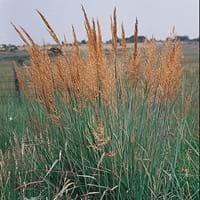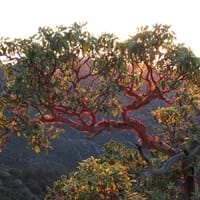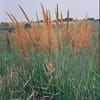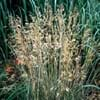Life Span
Perennial
Perennial
Origin
North America, United States, Northeastern United States, Mid-Atlantic United States, Southeastern United States, North-Central United States, Central United States, South-Central United States, Texas, Canada, Mexico
Southwestern United States, Mexico
Types
Not Available
Not Available
Habitat
Grassland, low mountains, Semi desert, Woodlands
Woodlands
USDA Hardiness Zone
4-9
7-10
Sunset Zone
Not Available
8, 9, 10, 11, 12, 13, 14, 15, 16, 17, 18, 19, 20, 21, 22, 23, 24
Habit
Clump-Forming
Twisted/Contorted
Flower Color
Non Flowering Plant
White, Light Pink, Ivory
Flower Color Modifier
Bicolor
Bicolor
Fruit Color
Not Available
Red, Coral, Orange Red, Dark Salmon
Leaf Color in Spring
Light Green, Blue Green
Light Green
Leaf Color in Summer
Light Green
Green, Light Green
Leaf Color in Fall
Blue Green, Burgundy, Copper
Green, Light Green
Leaf Color in Winter
Tan
Green, Light Green, Dark Green
Plant Season
Summer, Fall, Winter
Spring, Summer, Fall, Winter
Sunlight
Full Sun, Partial Sun
Full Sun, Partial Sun
Type of Soil
Clay, Loam, Sand
Clay, Loam
The pH of Soil
Acidic, Neutral, Alkaline
Neutral, Alkaline
Soil Drainage
Average
Well drained
Bloom Time
Late Summer, Early Fall, Fall
Spring, Late Spring, Early Summer
Tolerances
Drought, Salt
Drought
Where to Plant?
Ground
Ground
How to Plant?
Seedlings
Stem Cutting
Plant Maintenance
Medium
Medium
Watering Requirements
Average Water Needs
Requires regular watering
In Summer
Lots of watering
Lots of watering
In Spring
Moderate
Moderate
In Winter
Average Water
Average Water
Soil pH
Acidic, Neutral, Alkaline
Neutral, Alkaline
Soil Type
Clay, Loam, Sand
Clay, Loam
Soil Drainage Capacity
Average
Well drained
Sun Exposure
Full Sun, Partial Sun
Full Sun, Partial Sun
Pruning
Remove damaged leaves, Remove dead leaves, Requires very little pruning
Remove dead or diseased plant parts
Fertilizers
No fertilizers needed
All-Purpose Liquid Fertilizer
Pests and Diseases
Insects
Red blotch
Plant Tolerance
Drought and Salt
Drought
Flower Petal Number
Single
Single
Foliage Texture
Medium
Medium
Foliage Sheen
Matte
Glossy
Allergy
Skin irritation
Not Available
Aesthetic Uses
Not Used For Aesthetic Purpose
Showy Purposes
Beauty Benefits
Not Available
Not Available
Environmental Uses
Air purification
Air purification
Medicinal Uses
Not Available
Not Available
Part of Plant Used
Whole plant
Whole plant
Other Uses
Used as Ornamental plant
Used as Ornamental plant, Used for woodware
Used As Indoor Plant
No
No
Used As Outdoor Plant
Yes
Yes
Garden Design
Dried Flower/Everlasting, Feature Plant, Foundation, Mixed Border, Wildflower
Feature Plant, Foundation, Mixed Border, Rock Garden / Wall, Shade Trees
Botanical Name
SORGHASTRUM nutans
ARBUTUS arizonica
Common Name
Indian Grass
Arizona Madrone
In Hindi
भारतीय घास
Arizona Madrone
In German
Indian Grass
Arizona Madrone
In French
Herbe indienne
Arizona Madrone
In Spanish
Hierba india
Arizona MADRONE
In Greek
Ινδικό Grass
Αριζόνα Madrone
In Portuguese
grama indianas
Arizona Madrone
In Polish
Indyjski Trawa
Arizona Madrone
In Latin
Indian Grass
Arizona Madrone
Phylum
Tracheophyta
Magnoliophyta
Class
Liliopsida
Magnoliopsida
Genus
Sorghastrum
Arbutus
Clade
Angiosperms, Commelinids, Monocots
Angiosperms, Asterids, Eudicots
Tribe
Not Available
Not Available
Subfamily
Not Available
Not Available
Number of Species
Not Available
Not Available
Difference Between Indian Grass and Arizona Madrone
If you are confused whether Indian Grass or Arizona Madrone are same, here are some features about those plants to help you choose better. Many people think that these two plants have the same characteristics, but one can see Indian Grass and Arizona Madrone Information and learn more about it. Fertilizers required for proper growth of Indian Grass are No fertilizers needed, whereas for Arizona Madrone fertilizers required are All-Purpose Liquid Fertilizer. Hence, one should know the basic difference between Indian Grass and Arizona Madrone if you are planning to have them in your garden to enhance its beauty.
<
Flowering PlantsImportance of Indian Grass and Arizona Madrone
Want to have the most appropriate plant for your garden? You might want to know the importance of Indian Grass and Arizona Madrone. Basically, these two plants vary in many aspects. Compare Indian Grass and Arizona Madrone as they differ in many characteristics such as their life, care, benefits, facts, etc. Every gardener must at least have the slightest clue about the plants he wants to plant in his garden. Compare their benefits, which differ in many ways like facts and uses. The medicinal use of Indian Grass is Not Available whereas of Arizona Madrone is Not Available. Indian Grass has beauty benefits as follows: Not Available while Arizona Madrone has beauty benefits as follows: Not Available.
Compare Facts of Indian Grass vs Arizona Madrone
How to choose the best garden plant for your garden depending upon its facts? Here garden plant comparison will help you to solve this query. Compare the facts of Indian Grass vs Arizona Madrone and know which one to choose. As garden plants have benefits and other uses, allergy is also a major drawback of plants for some people. Allergic reactions of Indian Grass are Skin irritation whereas of Arizona Madrone have Not Available respectively. Having a fruit bearing plant in your garden can be a plus point of your garden. Indian Grass has showy fruits and Arizona Madrone has no showy fruits. Also Indian Grass is not flowering and Arizona Madrone is not flowering . You can compare Indian Grass and Arizona Madrone facts and facts of other plants too.





